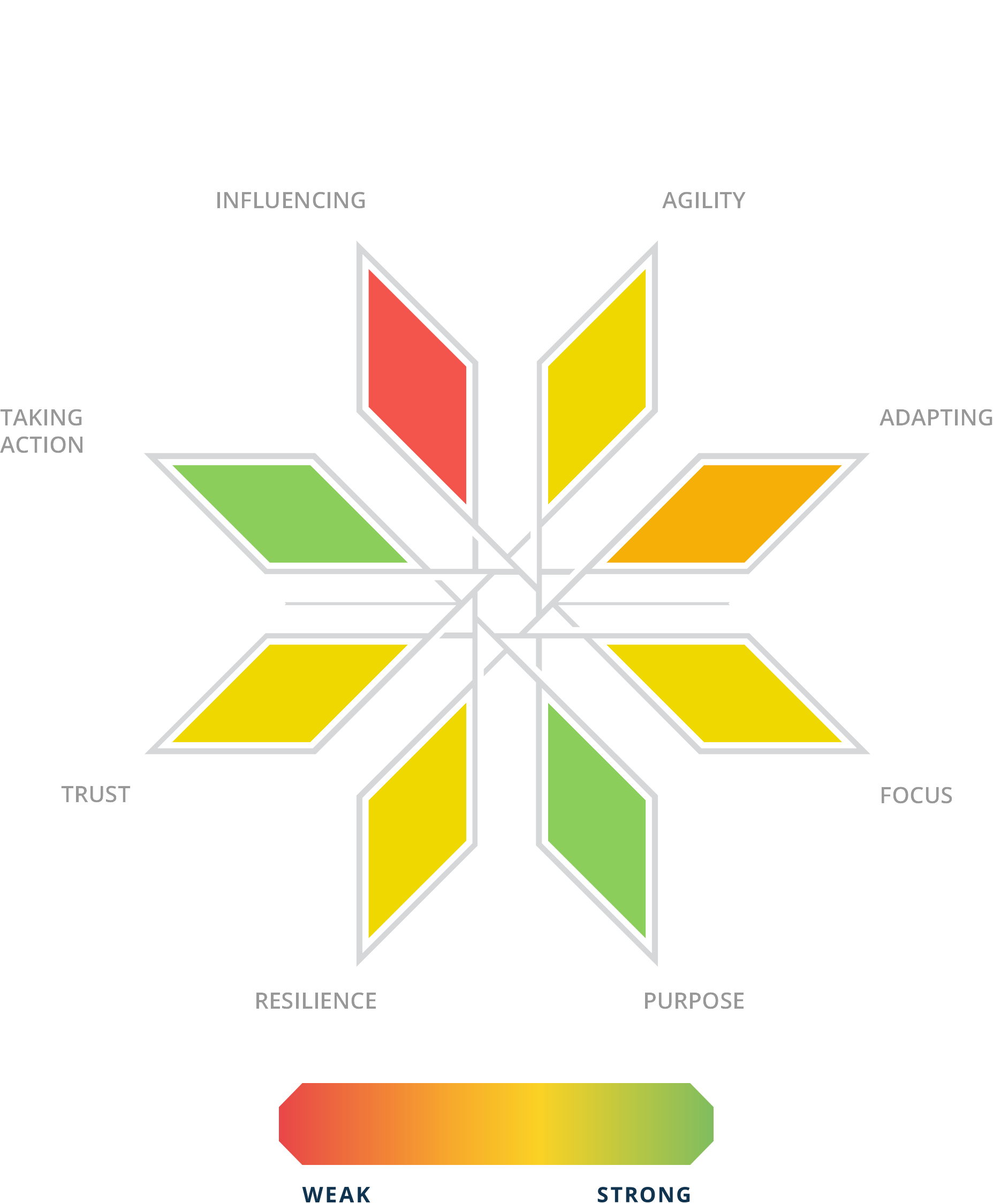THE SCIENCE OF SUCCESSFUL TEAMS
WHY THESE 8 HABITS?
We wanted to know if there were any common ways of working that were shared by teams that had a strong track record of achieving exceptional performance. One in 10 teams fall into this category and we discovered that their performance relied on a lot more than the individual talent within the team.
Top teams shared 8 team habits, 4 of which are about the inner game — how the team work together, and 4 on the outer game — how the team works externally in the wider organisation.
UNDERSTANDING THE HABITS

THE OUTER HABITS
The top half of the diagnostic maps the external habits that contribute to your Team’s impact. They measure key behaviours and ways of working that drives high performance for your team.
THE INNER HABITS
The lower half of the diagnostic maps the internal habits that are the foundations of your Team’s effectiveness. The inner habits reflect how your team works together to unlock their full potential.
Focusing on the team habits that really matter, based on the context of the team, is what unlocks performance. To make the most progress quickly the team need to work on their priority habits in the right order.
Over the last 10 years Meta Team has worked with thousands of teams to work out not only what the priority habits are, but how to sequence them in the right order for maximum impact.
THE HABITS
THE OUTER HABITS
TAKING ACTION
WHEN THE HABIT IS STRONG
When this habit is strong teams are typically responsive, dynamic and overcome obstacles.
WHEN THE HABIT IS WEAK
Taking action is built on trust, agility, and discipline. When this habit is weak decision making can lack focus and teams often struggle to prioritise.
INFLUENCING
WHEN THE HABIT IS STRONG
When this habit is strong teams share trusted relationships with their key influencers that are built to last.
WHEN THE HABIT IS WEAK
Influencing is the basis for teams being trusted — enabling them to fulfil their shared purpose.
AGILITY
WHEN THE HABIT IS STRONG
When this habit is strong teams think strategically, creating and synthesising a unique view of the landscape inside and outside of the team.
WHEN THE HABIT IS WEAK
Agility is highly correlated with a team’s ability to innovate and find new ways of delivering value.
ADAPTING
WHEN THE HABIT IS STRONG
When this habit is strong teams are consistently looking for and seizing opportunities to improve.
WHEN THE HABIT IS WEAK
How a team scores on improving is highly correlated to overall team performance.
79% Distracted
Teams say multiple priorities are pulling them in different directions.
— META TEAM DATA —
26% Unsure
Teams do not have a clear and compelling team purpose.
— META TEAM DATA —
It’s difficult
“No wonder team development is difficult as traditional approaches aren’t sufficient so companies are missing a trick.”
— META TEAM DATA —
23% Increase
A proven increase in performance and value from those teams that displayed the eight high-performing habits — tested with over 1000 teams from around the world.
— META TEAM DATA —
41% Struggle
Teams struggle to improve how they work together.
— META TEAM DATA —
26% Unaware
Teams do not recognise their shortcomings
— META TEAM DATA —




THE INNER HABITS
TRUST
WHEN THE HABIT IS STRONG
When this habit is strong teams share a genuine spirit of togetherness, where each team member feels able to be themselves and make the most of their individual talents.
WHEN THE HABIT IS WEAK
How a team scores on Trust is strongly correlated to their speed of action, agility and innovation.
RESILIENCE
WHEN THE HABIT IS STRONG
When this habit is strong teams often share a passion and commitment to succeed as a group.
WHEN THE HABIT IS WEAK
Resilience is the strongest determinant of the team’s overall effectiveness.
PURPOSE
WHEN THE HABIT IS STRONG
When this habit is strong teams typically share a deep understanding about the expectations of their key influencers.
WHEN THE HABIT IS WEAK
Teams who share a strong purpose have a greater impact.
FOCUS
WHEN THE HABIT IS STRONG
When this habit is strong teams are tightly integrated, focussed on hitting deadlines, productive, and are able to course-correct.
WHEN THE HABIT IS WEAK
How a team scores on focus is often related to its resilience, agility, and speed of action.
BOOK A DEMONSTRATION TODAY
Making Teams Work